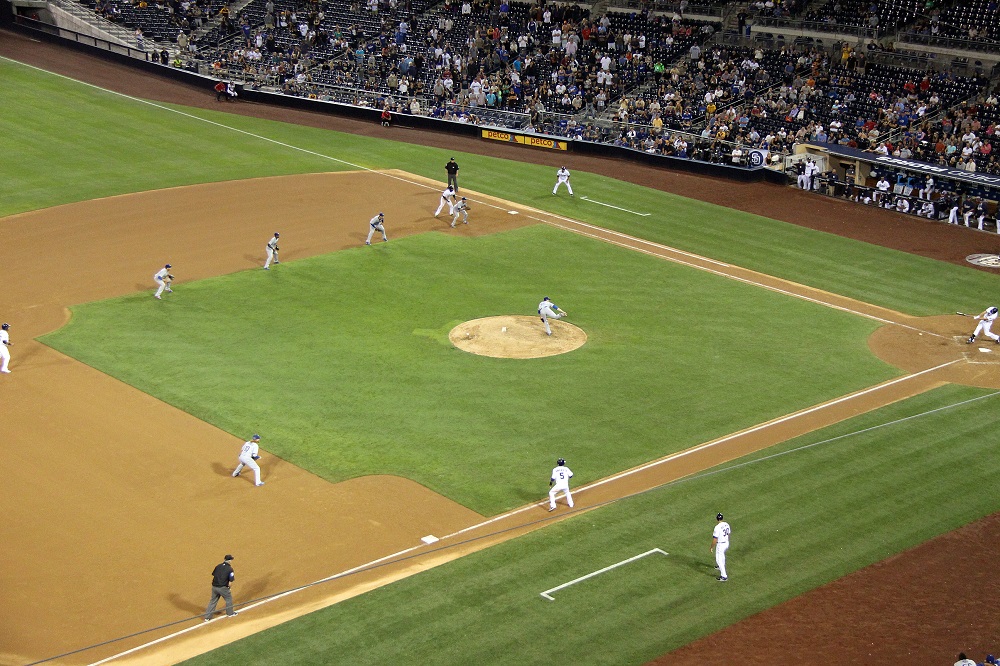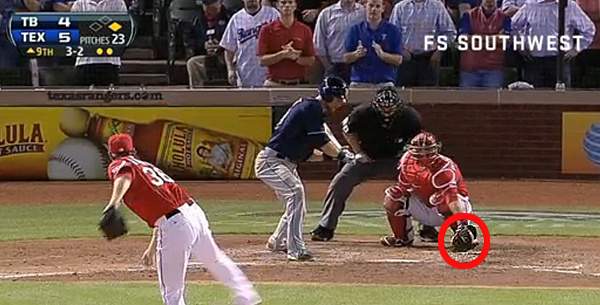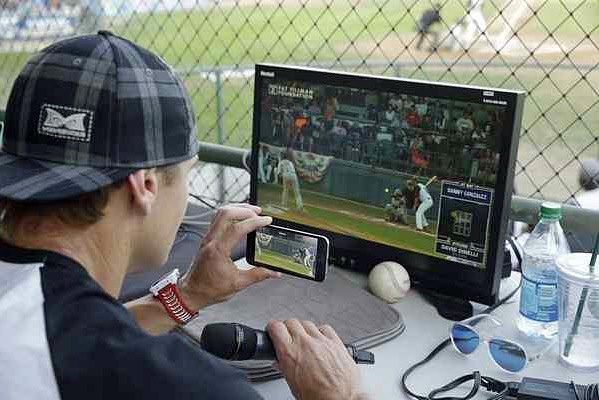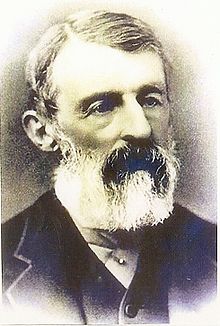The game we all love has changed considerably since the first published rules of baseball were written in 1845 for a New York baseball club called the Knickerbockers. Alexander Cartwright authored the rules and is considered to be one of “the fathers of baseball” along with Abner Doubleday, Henry Chadwick and the most likely true “father of baseball” Daniel Lucius “Doc” Adams.
Changes to the game in our lifetime – in the name of progress – seem to have been accelerated but have, in fact, proceeded at a snail’s pace. The rationale behind most changes, other than those to insure player safety, have been an attempt to improve the fan experience and expand the fan base. Oh yes, and to grow the corporate dollar.
Did I mention change comes slowly to major league baseball? For instance, the designated hitter became a reality in the American League with a vote in 1973. The National League, 44 years later, is still firm in its resolve not to use a designated hitter in place of the pitcher going to bat.
However, that is only part of the designated hitter story. The idea of adding a 10th man to the baseball lineup to bat for the pitcher is at least now 110 years old. It was suggested as early as 1906 by the venerable Connie Mack, who managed the Philadelphia Athletics for 50 years, finally retiring from active duty in 1950. Mack saw the advantage of having a bona fide hitter stand in for the pitcher who even back then was less than a stellar hitter – Babe Ruth notwithstanding.
In 1928, John Heydler, the president of the National League, revived the issue but the rule was ironically rejected at that point by the American League management. Almost seven decades later Connie Mack’s vision of a designated hitter came into fruition.
More recently the “shift’ has come into vogue to the delight of some fans and the chagrin of others. Many fans, myself included, will point to former Tampa Bay Rays manager Joe Maddon as the instigator of the present proliferation of the shift which, according to research by Baseball Info Solutions who track every shift and the number of runs it saves, has really mushroomed since 2013.
Some fans, again including myself, will remember at least reading about the “Williams shift” used against Ted Williams by Cleveland manager Lou Boudreau in 1946 in a double header with the Red Sox.
“It was a good idea,” Boudreau said in an interview in 2001, “But it wasn’t my idea. I didn’t invent it. Jimmy Dykes did.”
Dykes was the manager of the White Sox in the summer of 1941, the year in which Ted Williams hit .406 being the last MLB hitter to attain the .400 mark. Dykes tried to slow Williams down with a shift very similar to the one used with left-handed hitters today, to little avail I might add. As we might expect to learn, Jimmy Dykes was not the first MLB manager to use the “shift”.
Beloved Dodgers broadcaster Vin Scully, speaking about the “Williams shift” announced, “I thought, ‘Well, that’s the first time I’ve ever heard of an infield overloaded against a hitter.’
As he was prone to do, Vin Scully did his homework as his curiosity got the best of him. He discovered another reference to a shift years earlier, with another Williams. In 1920 Cy Williams had faced an infield loaded to one side, not unlike the one we see today.
Still not satisfied, Vin kept on digging. He discovered that long before either Williams faced a defensive shift, a manager named Ferguson had moved his second baseman to the shortstop side of the bag against a right-handed hitter.
“So, if you’re talking about shifts, it might go to 1877,” said Scully.

Dodger fans witnessed “The Wally Wall” (named after then Dodgers bench coach Tim Wallach) for the first time on August 29, 2014 against the Dan Diego Padres at Petco Park. It didn’t work.
(Photo credit – Ron Cervenka)
Change does come slowly to major league baseball but it does come and more often than not starts with an individual who has an idea or a cause.
Baseball often seems to be the last one to the dance, the last one to move into a new era. MLB was the last of the four major North American professional sports leagues to implement an instant replay review system.
The National Football League first experimented with instant replay technology to review calls on the field in 1986 while the National Hockey League has used video instant replay since the 1991-92 season to review disputed goals or time infractions regarding goals. The National Basketball League came on board with video review during the 2002-03 season.
MLB first used video review during the 2008 season to review disputed home runs while the present system of expanded video review was implemented during the 2014 season allowing review of most umpire calls except balls and strikes.
The Dodgers and Padres squared off for the United States opener of the 2014 season with players, managers and fans looking to the Replay Operations Center in New York insuring that umpires get it right. The Dodgers initially had opened the 2014 season in Australia against the Arizona Diamondbacks without video review.
“I tell you the fans will love it,” then-baseball Commissioner Bud Selig said after owners met and voted their unanimous approval. “It’s another in a long list of changes that will make this sport better than it already is.”
Baseball does change slowly but it does change in an effort to make the game better for players, fans and owners.
So, what’s next?
The “get it right” mantra is a catchy phrase and the one used to try to convince all that video review has improved the game. If that is the case, then why has baseball stopped with its present system of review and not attended to the one area that is the most contentious in the game? That is, calling balls and strikes.
Data given to Noah Davis and Michael Lopez at Nate Silver’s FiveThirtyEight revealed that the average umpire had an accuracy rate of slightly more than 83 percent in 2008 when calling balls in strikes. That accuracy has improved and is now at 86 percent in that umpires can more accurately see which pitches they are getting right and more importantly, the pitches they get wrong. That means umpires have 14 percent of their calls incorrect. According to FanGraphs, over the course of a full season, MLB umpires at best are wrong more than 50,000 times with their evaluation of balls and strikes.

This would be among the 14 percent.
(Video Capture courtesy of FS Southwest)
Changes in all facets of life often start with one idea, one person to pursue and advance that idea even though it might not come into fruition for some time to come. That person for the balls and strikes issue is none other than former major league outfielder and current MLB Network analyst Eric Byrnes, who has been pushing for a computerized strike zone for years.

Former major league outfielder Eric Byrnes uses a computerized video system to call balls and strikes at an independent minor league baseball game between the San Rafael Pacifics and Vallejo Admirals on Tuesday, July 28, 2015, in San Rafael, California.
(Photo credit – Eric Risberg)
Byrnes, who was affectionately given the nickname Crash Test Dummy as a player, was the catalyst for the first ever games played with an electronic umpire calling balls and strikes at the professional level. On July 28 and 29, 2015 the San Rafael Pacifics of the independent Pacific Association used a pitch-tracking system to call balls and strikes during the two-game series. A home plate umpire was still behind the plate to call checked swings, foul tips and home plate plays.
Sportvision provided the tracking system used to call balls and strikes. It is also the creator of PITCHf/x, which tracks and records pitches in all 30 Major League stadiums so the information can be used on broadcasts and for performance analysis. The Pitch f/x technology uses a three-camera system that records the trajectory of a pitch within a one-inch margin for error.
Byrnes gave Sportvision a voice by calling balls and strikes over the PA system in one game and went behind the plate in another game with balls and strikes being relayed to his ear piece.
Little did we know that umpires are already closely acquainted with pitch-tracking technology that is used to evaluate their performance. “We currently use technology for both evaluation purposes and training purposes,” says MLB spokesman Mike Teevan. “All umpires receive a computerized breakdown of their plate performances, including calls they got right and calls they missed.”
How did the home plate umpire react to his Sportvision experience?
“We didn’t have one issue,” Byrnes said. “Going in, the crew chief said he was skeptical. But by the end of two days, he said it allowed him to do his job as a home plate umpire so much better. He could focus on check swings, foul tips, plays at the plate. He didn’t have to worry about calling balls and strikes.”
What about the human element that we fear losing if umpires are removed from some 280-300 calls per game?
“You always want to see the human element,” he said, “but I’ve always said the human element is the players. I’ve never walked away from a game thinking, ‘Hey, great — the umpire took it into his own hands.’ I’m not trying to get rid of him. All I want is for the strike zone to be consistent.”
What about the competitors in the game?
Byrnes said it would be reasonable to expect “initial resentment” from pitchers who “appreciate getting a call if it’s six inches off the plate. Then again, what everybody wants most is consistency. Now they’re gonna be getting calls up here (chest) and down here (knees), because that’s the entire strike zone.”
“As for the hitters, I’d be shocked if they wouldn’t want this. What does the game need right now? More offensive production. It’s gonna force pitchers to throw the ball over the plate, and it’s gonna force hitters to swing at strikes that, for whatever reason, were rarely called over the years.”
So will MLB consider what ESPN’s Pablo Torre refers to as a “robot umpire revolution” that will render humans obsolete behind the plate to make judgement calls on balls and strikes? MLB commissioner Rob Manfred seems to be at least be open to consider that possibility.
“Look, the technology of calling balls and strikes without a human being involved has continued to improve,” Manfred said, according to USA Today. “Sandy Alderson started us down the path of reviewing balls and strikes via technology after the fact. The principal reason we’ve always done it after the fact is that unlike the box you see on a broadcast, (for) our system that we use to grade our umpires, someone goes in and manually adjusts the strike zone for the batter. As technology continues to improve and those sorts of adjustments can be made (in) real time, that technology will become more feasible for use on the field. I don’t believe we are there yet.”
Did commissioner Manfred just say “I don’t believe we are there yet”?
Hmmm…
It indeed would be interesting to see an Earl Weaver kicking dirt at a robot umpire or a Lou Pinella slamming his hat down after a Sportvision-called strike.
Stay tuned…




 December 7th, 2016 at 7:01 am
December 7th, 2016 at 7:01 am  by Harold Uhlman
by Harold Uhlman 
 Posted in
Posted in 

A very thought-provoking article, Harold. Thanks!
Although I would be at the very front of the line calling for utilizing Robo Umps behind home plate, I can safely say that it will (most likely) never happen in my lifetime. The simple reason is that the MLB Umpires Union would NEVER go for it – not ever; and I’m not convinced that the MLB or even the MLBPA would either.
While a 14 percent blown-call rate sounds atrocious, an 86 percent correct-call rate is actually pretty damn good. In our everyday world, 86 percent would get you a B+ (or perhaps even an A-) letter grade. The problem is, that 14 percent failure rate could be the difference between making it to the World Series or not; or even worse – it could abruptly take you out of it.
I’ve got to say that I was completely unaware of Byrnsey’s involvement in all of this. That being said, the system that he used in the video clip is EXACTLY what I had envisioned as the best way to utilize electronic balls and strikes calling in the MLB – and I mean exactly.
I usually hate change. I hardly ever change anything in my routines and I’m slow to adapt to baseball changes. But somehow, I think it wouldn’t take too long to get use to the way balls and strikes are called, because it can only be for the best..